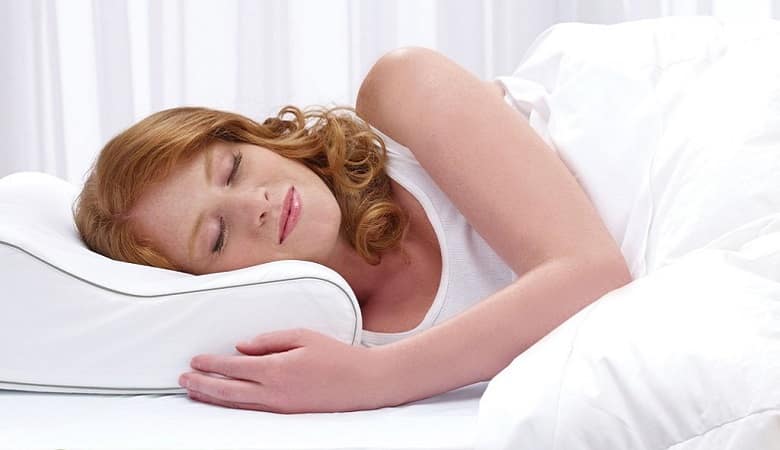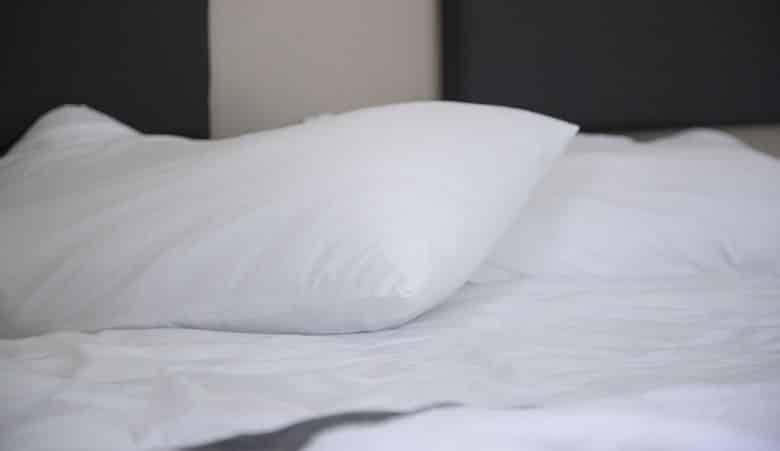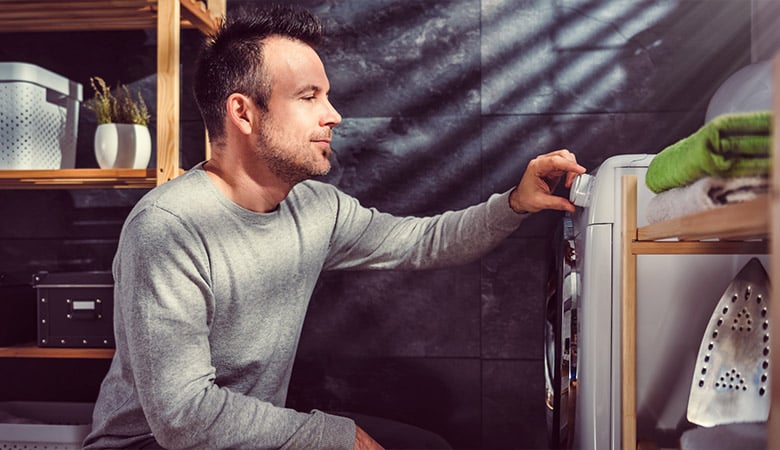Pillows are an added luxury in getting a good night’s rest. We could sleep without them, but with them, there’s the feeling of comfort, relaxation, and they give a level of support for our neck, head, and spine. Pillow fillers help define the character of the pillow.
The most common filler for pillows are synthetic materials derived from polymer fibers, such as polyester and memory foam. Natural fillers have been around longer, and consist of feathers, down, wool, latex, cotton, and buckwheat.
When it comes to down pillows vs. memory foam pillows, which one is best to choose? There are advantages and disadvantages to both types of pillows, and appeals to a unique audience of sleepers. While one person may get a great sleep from one pillow, the same pillow could result in pain for another person. It’s best for each individual to try different pillow types for themselves to find what works best with their bodily needs.
We’ll take a look at the advantages and disadvantages of both types of pillows, including down alternative pillows, how best to care for them, and what type of person would do best with each pillow.
Memory Foam Pillows

Memory foam pillows were first developed by NASA in the 70s to help lessen the impact of takeoff for astronauts. Since then, it has been mostly found in mattresses and pillows.
Memory foam pillows can be either solid-filled or shredded. Solid fillers give a supportive feel as your head sinks into the pillow, but the fill cannot move. Shredded memory foam pillows also give a supportive feel, but have a fluffier feel, since the fill is not solid. Memory foam pillows are naturally hypoallergenic and resistant to dust mites and bacteria.
They can still trap dead skin cells and sweat. Because the pillows are manufactured using polyurethane and other chemicals, they often emit a strong, chemical odor. This smell, known as “off-gassing” should only last a few days. If the smell still exists after a few days, air it out under a fan in the sun for a few hours. Baking soda will also help to absorb the smell.
Advantages of Memory Foam Pillows
- They mold to the shape of your head and neck.
- They reduce high levels of pressure placed on your head and neck.
- They support the natural curve of your neck.
- They allow neck and upper-back muscles to fully relax and recover.
- They’re hypoallergenic and antibacterial.
- They reduce snoring and sleep apnea by keeping your neck raised.
- They’re more affordable.
Disadvantages of Memory Foam Pillows
- They emit a strong, chemical odor due to its packaging and how they’re manufactured.
- They retain body heat.
- Their foam is slow to recover to its natural state.
Caring for Your Memory Foam Pillow
Your memory foam pillows should be washed every 2 to 3 months. They should not be put in a washing machine or dryer, or wrung. Wringing the pillow can damage the memory foam. Memory foam is a delicate material and if not properly cared for, it can easily deteriorate. Below are some ways to clean your memory foam pillow.
- Deodorize the pillow – Remove all protective covers from the pillow. Sprinkle one side of the pillow with baking soda and let it set for 1 to 2 hours, in the sunlight. Vacuum the surface of the pillow to remove the baking soda. Flip the pillow on the other side and repeat the steps.
- Spot clean the pillow – Remove all protective covers from the pillow and use either a dry, clean cloth or a paper towel to blot any stains. Combine a gentle detergent and lukewarm water and gently rub the stain in a circular motion, working from the outside to the center until the stain is removed. Allow the pillow to air dry completely.
- Deep Clean the pillow – Submerge the pillow without coverings in a tub or sink filled with cold water. Squeeze the foam gently, without wringing, until the stain is removed. Drain and refill the tub or sink with cold water. Submerge and gently squeeze the pillow until most of the water is removed. Place the pillow on a dry towel and roll, squeezing gently 2 or 3 times. Allow the pillow to air dry.
Memory foam pillows can last between 1 and 3 years. To see if it’s time for a new pillow, fold the pillow in half; if it doesn’t immediately revert back to its normal shape, it’s time for a new pillow.
Who Should Use Memory Foam Pillows?
Memory foam pillows are a good choice for anyone who has general difficulties sleeping comfortably, including a stiff or sore neck, shoulder or back pain, and suffers from headaches.
Down Pillows

Down pillows are among the natural fillers, made from animal products. Its feathers are plucked from the back, wing and chest of geese and ducks. This makes it more expensive due to its scarcity, but they can also be rejuvenated and re-cased, unlike pillows filled with man-made fibers.
Advantages of Down Pillows
- They are genuinely soft pillows – light and cuddly to the touch.
- They hold their shape well – as it molds to the shape of your head.
- They’re durable – with proper care, can outlast most synthetic pillows.
- They’re sustainable – a renewable resource that is biodegradable and recyclable.
Disadvantages of Down Pillows
- They can cause an allergic reaction – due to the natural animal materials.
- They are more expensive – due to it’s scarcity.
- They are difficult to clean compared to other pillows.
- They absorb and retain body heat which can make the pillow feel warm and uncomfortable.
Caring for Your Down Pillow

Down pillows can last up to 20 years if they are properly taken care of. It’s recommended to keep the pillow in a zippered pillow protector as well as a pillowcase. This keeps natural body oils from absorbing into the feathers.
Read the label before washing. Machine washable pillows need two extra rinse cycles and two extra spin cycles. Low heat is recommended for drying, but stop to hand fluff every 20 minutes. Pillows are dry when no lumps can be felt.
Who Should Use Down Pillows?
Down pillows are a good choice for practical people who also want comfort. Down pillows will outlive most other pillows which makes it a practical choice.
Down Alternative Pillows
If you’re still stuck between a rock and hard place on deciding which pillow is better, down or memory foam, there may be another option to consider. Down alternative pillows attempt to mimic the advantages of down pillows, while improving upon some of down’s disadvantages.
Down alternative pillows have a polyester microfiber material that has the likeness of down’s, and mimics the lightness and softness of authentic duck or goose down. Most down alternative pillows are medium-loft, and may range in firmness soft to medium-firm.
Some brands feature gel fibers or siliconized fibers, which can be even softer than conventional down alternative material. Since there’s no animal product, the down alternative pillow is completely hypoallergenic, so it does not trigger an allergic reaction.
Advantages of Down Alternative Pillows
- They’re hypoallergenic.
- They’re more affordable.
- They absorb minimal body heat.
- There are fewer aches and pressure points from sleepers with neck and shoulder pain.
- They’re easier to clean.
Disadvantages of Down Alternative Pillows
- They are more likely to develop lumps.
- They are less durable than most pillow types.
- They are more widely available than down pillows.
- There’s noise potential.
- There’s regular shaking and fluffing to keep shape.
Caring for Your Down Alternative Pillow
Down alternative pillows are machine washable; they never need to be dry-cleaned. This in itself makes it a very inexpensive pillow to care for.
Who Should Use Down Alternative Pillows?
Down alternative pillows are a good choice for people who sleep on their back, side, or stomach. They are also good for people who weigh less than 130 pounds, and people who are allergic to the animal product in the down pillow. This pillow may also be a good option for people on a budget.
